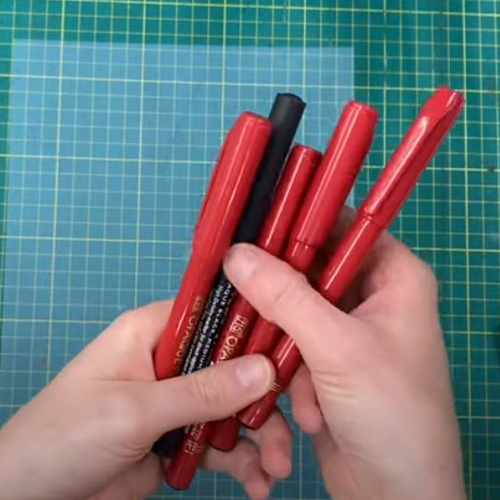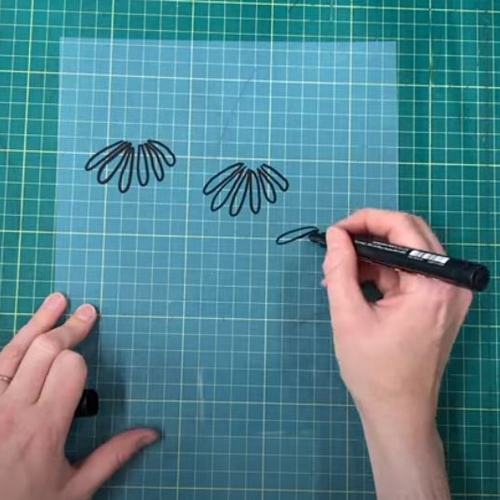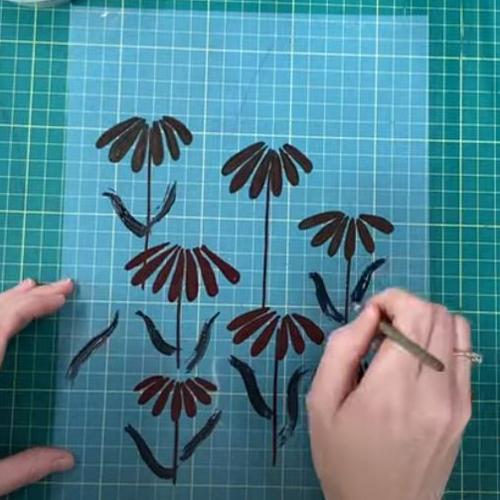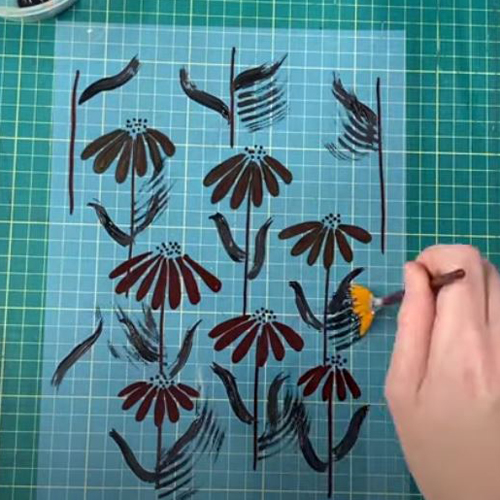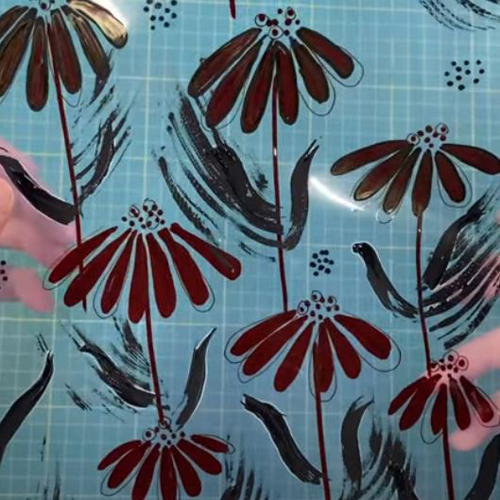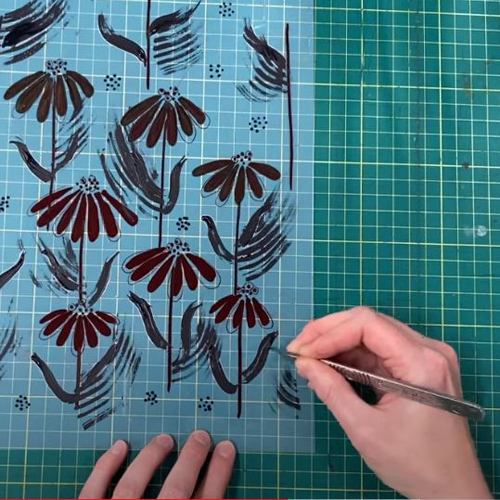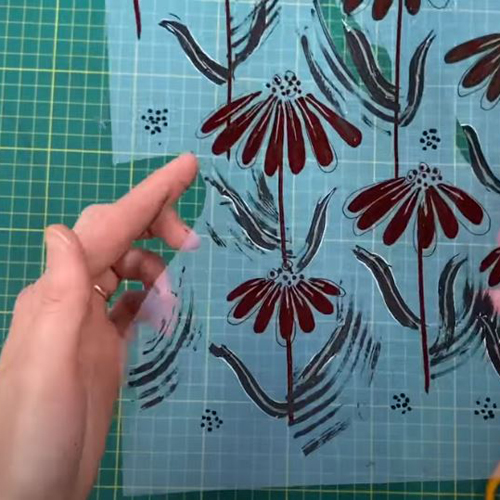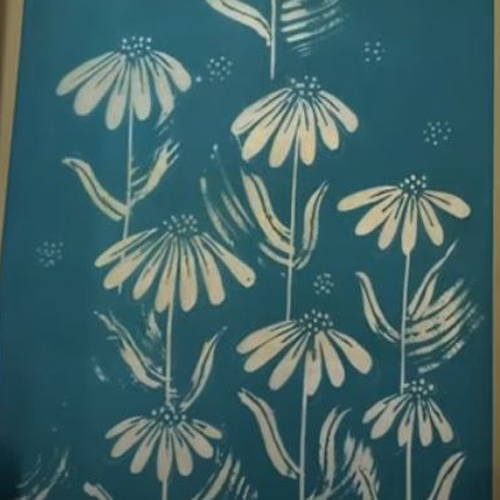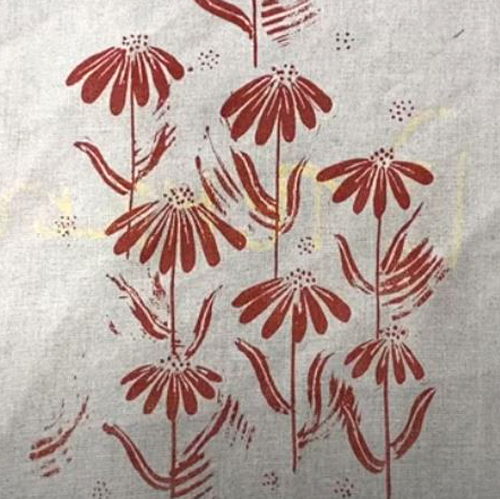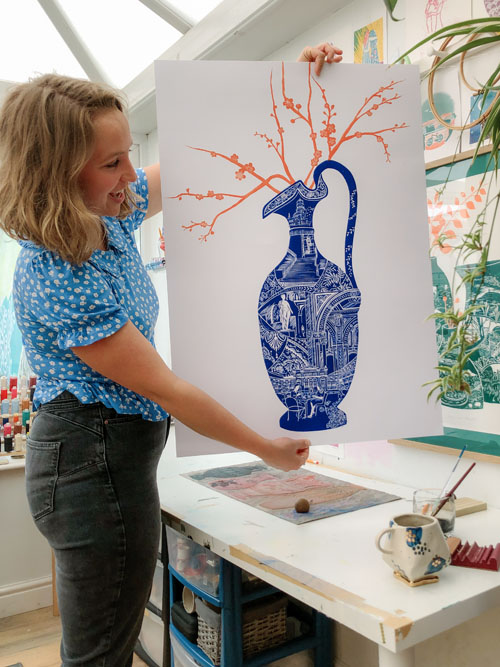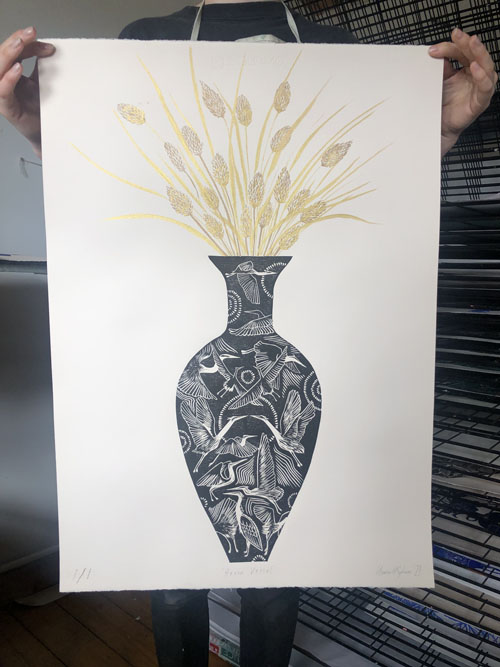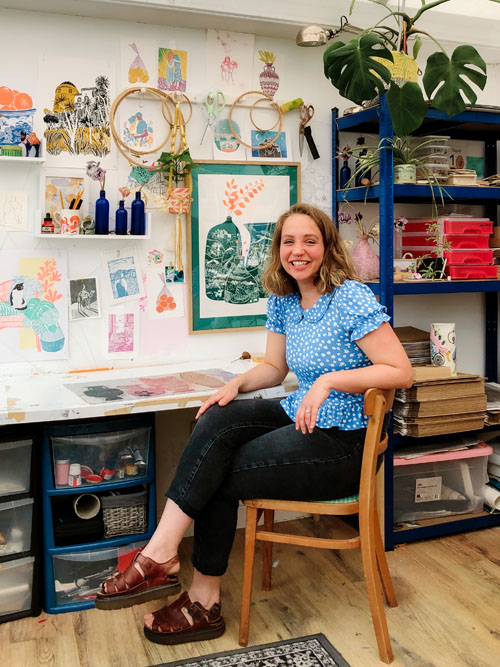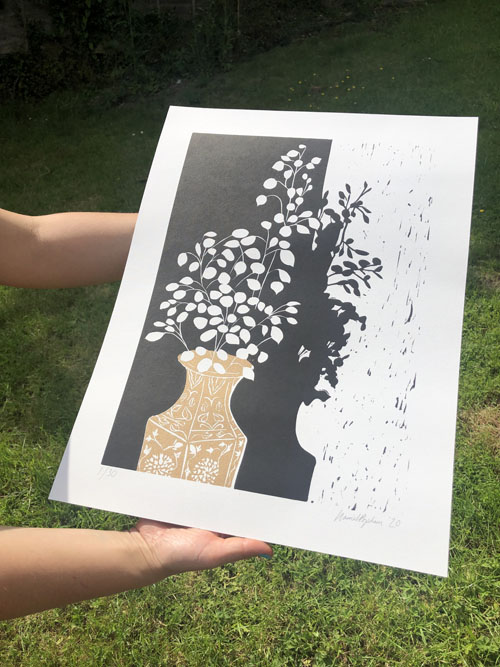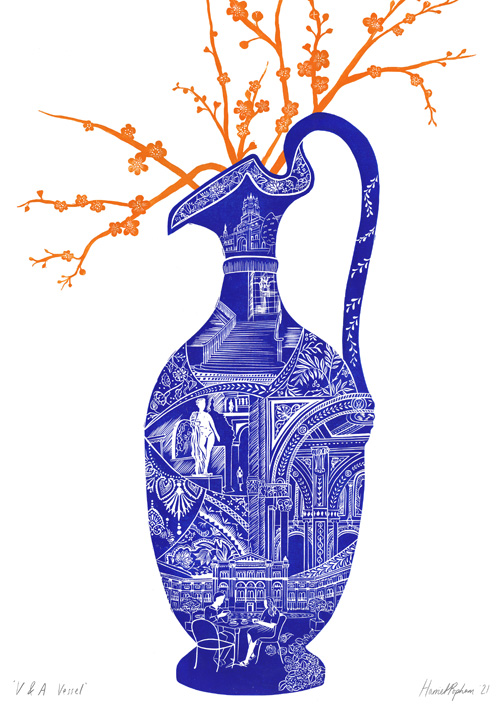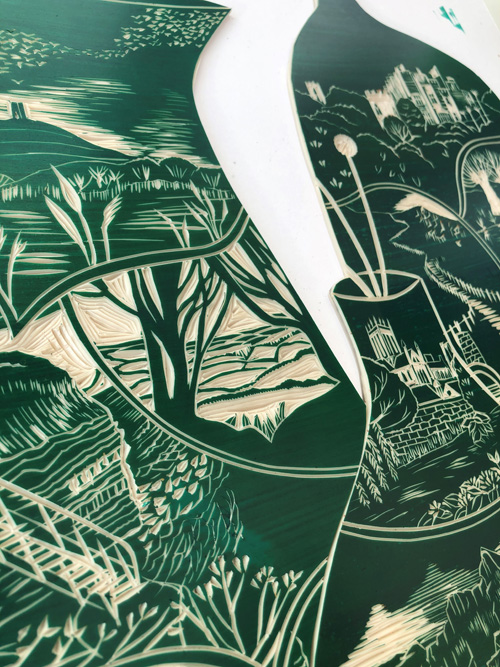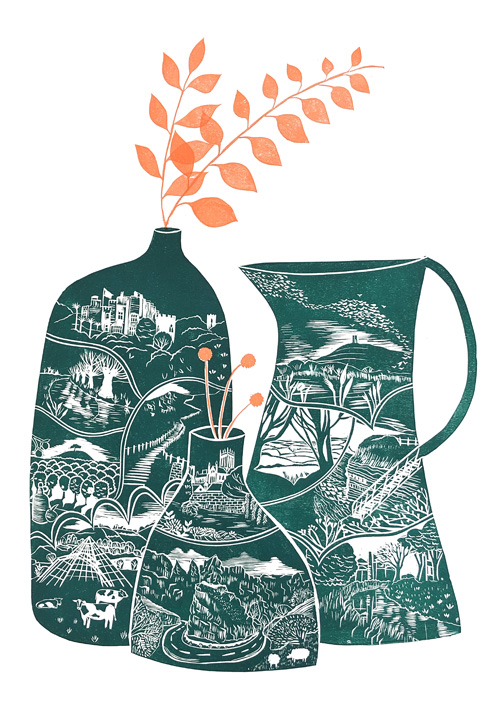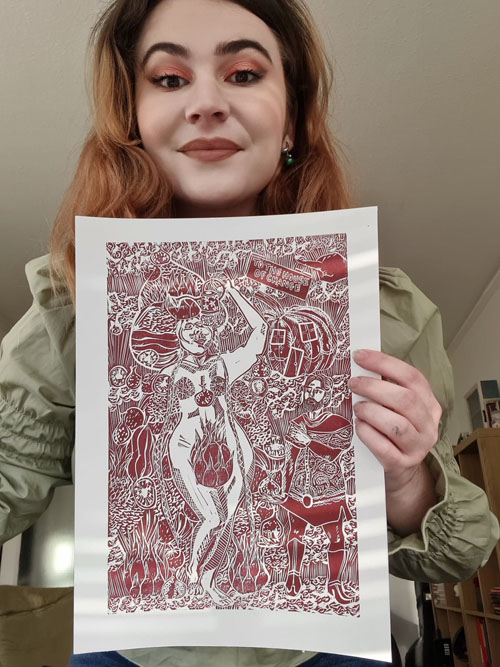
Describe your printmaking process.
My printmaking process is quite straightforward. I start by sketching out a composition straight on the lino. I sketch this out mainly to see where everything goes, but I don’t do this in a lot of detail regarding how every element or character will look. I then start carving, and that’s when I make my decisions, I love “listening” to the lino block for this.
I look at reference photos throughout and carve the images and faces intuitively from the lino, which gives the characters a unique flair, which could not be achieved through any other process. I apply this to any other material I work with, be it wood or metal, and try to respect and “listen to” the medium I use and stay true to the tools and the marks they can make, which is ultimately what I think constitutes my “style”.
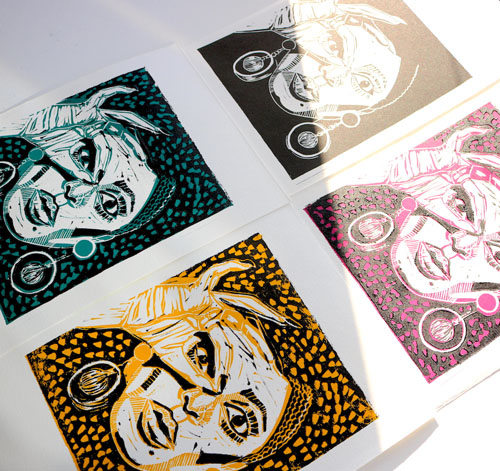
How and where did you learn to print?
I learned to print as an apprentice of a masterful Romanian contemporary painter and printmaker, Matei Serban Sandu, in my teen years. He introduced me to the technique as soon as he saw my first ever sketches, as I had just discovered I could draw when I was around 15.
I then went to university, studied a very conceptual art course, made more collage, installation and relational artwork, and didn’t make any prints for three years! I started printmaking again when Covid hit, and I have been making prints ever since, and I am now able to do this pretty much full time!
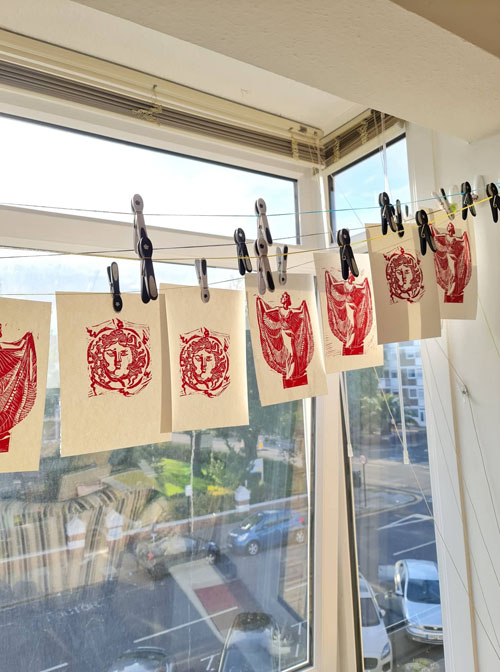
Why printmaking?
I get along so incredibly well with printmaking. I think this is because I like complicated works with many elements, and my work can be very chaotic. I think prints have, firstly, a very natural limit to what can be carved, and secondly, a nice and exact finish, no matter how all over the place all the elements are. They always appear as a nicely finished and considered piece of work, and this is an inherent quality of the process.
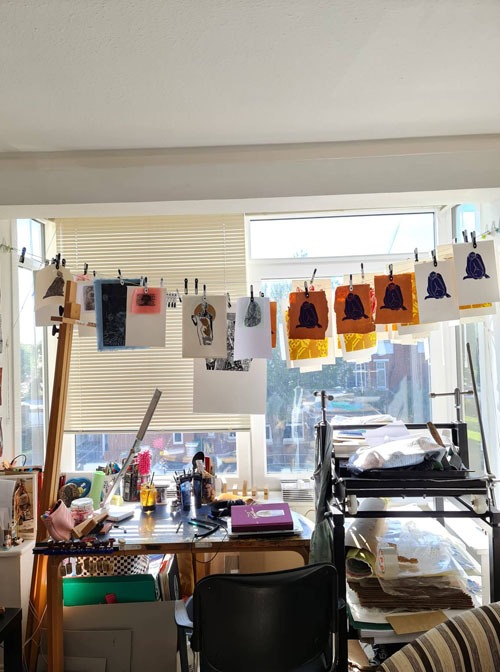
Where do you work?
When Covid hit, I lost some of the work I was doing for a few galleries. I started working in hospitality again, so I was furloughed a lot, which meant I had time to be a full-time working artist, and I constantly made prints all throughout! I had never been happier! Carving is also a very therapeutic practice so I think it helped a lot during these tough times.
I am now able to keep working full time as an artist, as my prints started selling through Instagram. I managed to get my work into a few galleries and shows, and I also started getting commissions! Gallery work has picked up again, so I do still pick up whatever part-time freelance work comes up.
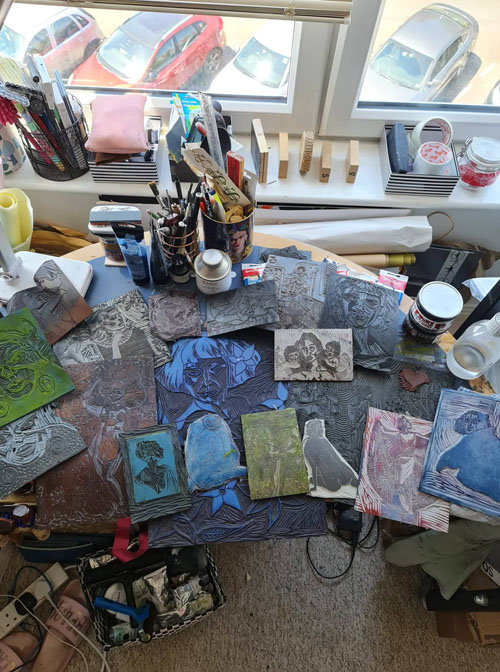
Describe a typical day in your studio.
I divide my days into admin days and making days. So if it’s a making day, it will either be a carving or printing day. I have a home studio with a large A2 printing press, which takes up the whole living room when I print. So I keep my printing days few and far between, with a large to-do list so I make the most of them.
On carving days, I normally start by making a few smaller prints for some of my series, which I film as content for Instagram reels. I then go on to carve larger works, which I also document in some ways, but less so, as I want to be more focused and “in the zone”.
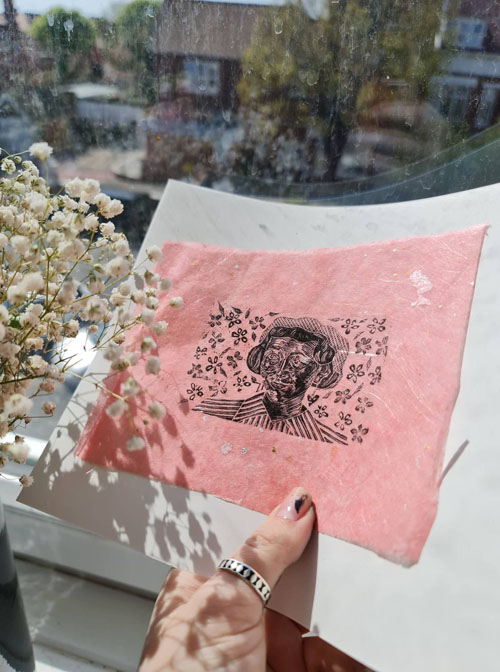
How long have you been printmaking?
For two years during my A levels alongside Matei Serban Sandu, and now full time for one year. So not very long really.
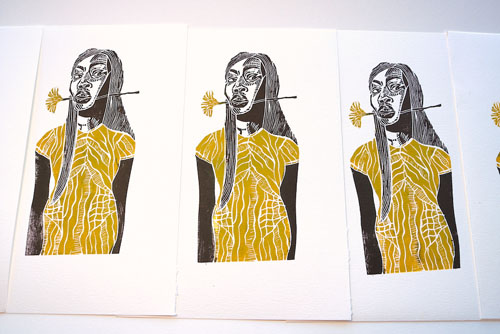
What inspires you?
People are my biggest inspiration. I love portraiture, and I love stories, which is why my work is so illustrative. I like busy looking illustrations and artworks and grandiose scenes. I like work where you can look back at it for a long time and every time you discover something new.
The Chapman Brothers are definitely my favourite artists by far, as they have a YBA (Young British Artist) sense of humour but have the old masters’ practice. They deal with a lot of topics that interest me such as artistic authorship, even heaven and hell.
I take a lot of inspiration from very classical artists, such as Albert Durer or Francisco Goya in terms of printmaking. I love large paintings like the Wedding at Cana by Paolo Veronese (did you know that he included himself and some painters of the time in this painting, such as Tintoretto and Titian? I love this fact so much). I also do a lot of collages and I love the surrealist movement. Hannah Hoch, Victor Brauner (my favourite painter, incidentally Romanian), Max Ernst, DeChirico are some of my favourite artists. Nowadays, I love Toilet Paper Magazine and David Shrigley.

What is your favourite printmaking product?
Well, let’s say the products I use regularly, and that I don’t imagine will ever change, the Caligo Safe Wash Inks, my Pfeil tools, and the classic grey hessian backed Lino! I feel like once you have the inks and tools down, you stick with them in printmaking! The Abig rollers are also good for the price!
I love experimenting with papers like the beautiful new Khadi papers, they are to die for! I also love Awagami Factory papers!
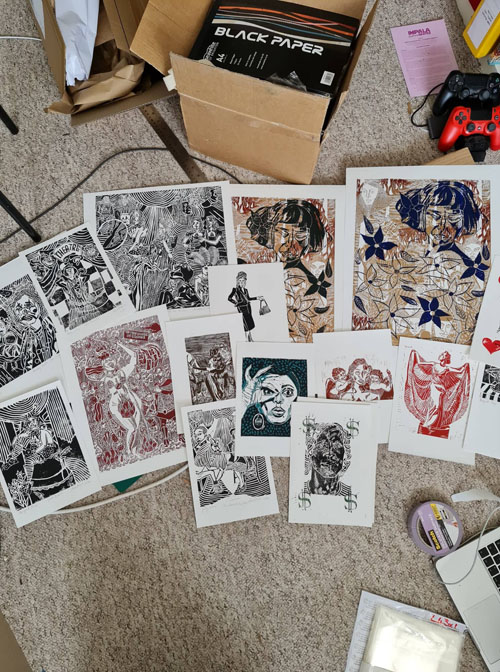
What have you made that you are most proud of?
My most detailed prints are definitely my favourite. I am really excited about the series of work I am currently adding to and I think every new work I make becomes my favourite.
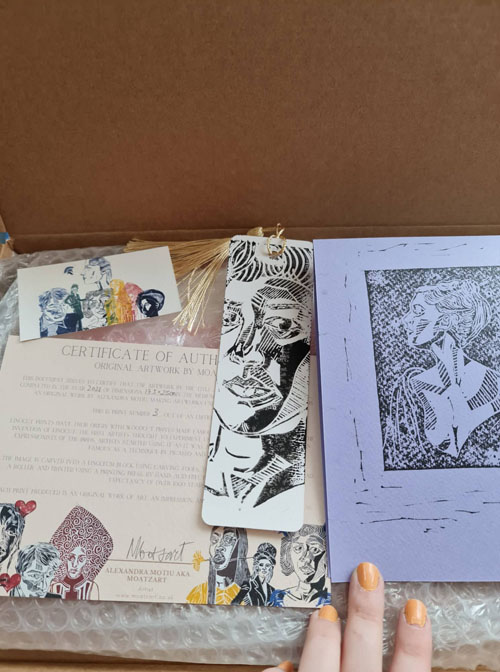
Where can we see your work? Where do you sell?
You can see and buy my work and other printed merch from my website. This is where my main shop is, including a blog and a gallery of all my work. I am also on view permanently with the IO gallery in Brighton, where you are also able to buy my work!
I have a few fairs coming up in Brighton as well, so if you follow me on Instagram, I will keep you posted!
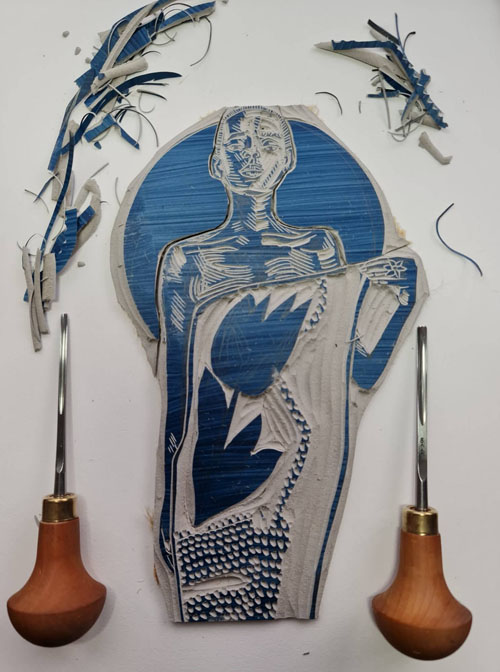
What will we be seeing from you next?
I have three main series I am adding to at the moment, and they are all equally wonderful. One based on Heaven and Hell, one on the children’s novel The Neverending Story, and one called They Are Dreaming, about dreams and ideals. I also have a few exciting collaborations in the works, so keep your eyes peeled.
As we slowly come out of lockdown I am excited to see what I can do with my work and hopefully set up some shows. I am new at being a full-time artist so I have a lot of plans and ideas, it feels like there are so many things I can do.

Do you have any advice for other printmakers and creatives?
I think people just starting out don’t realise how much artists actually steal from their surroundings. I know I was under the impression that everything came from an artist’s “imagination” (whatever that is), when it’s actually a load of research and looking at references, combining and deciding on things and experimentation.
A good tip I was once told, that I absolutely stand by, is to go as far back in time with your references as possible. Everything is copied and further copied from century to century, by artists admiring and responding to the artists before them, so if you make art like the artists of today your work will pale in comparison, as it is a copy of a copy of a copy. Always go to the source for inspiration, and your work will have depth. So if you’re interested in Abstract Expressionism, for example, go to the artists who first started the movement.
To see more from Moatzart follow her on Instagram!

